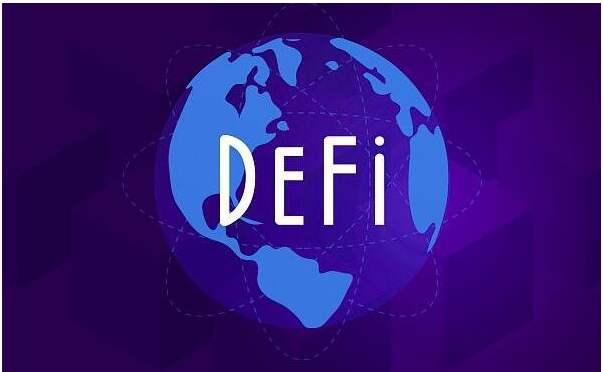Interpretation of Binance Research Institute LSDFi Report: When Liquid Staking Meets DeFi
Original Title: 《LSDfi: When Liquid Staking Meets DeFi》
Author: JieXuan Chua
Compiled by: ShenChao TechFlow
1. Introduction
Recently, Binance Research released a report on LSDfi, covering the overall landscape, yield situation, and potential risks of the LSDfi sector. The report indicates that while LSDfi is growing rapidly, its scale is less than 3% of LSD itself, and as a young sector, there is still room for improvement.
Additionally, in the BNB chain ecosystem, liquid staking and related activities are also developing. Data shows that LSD projects on this chain have relatively lower fees and present participation opportunities.
At the same time, while maximizing ETH staking yields, participants in LSDfi, as the sector is still in its early stages, need to be aware of various risks and seek a balance between yield and risk, locking in certain opportunities.
ShenChao has selected and distilled the core viewpoints of this report, as follows:
2. Core Conclusions
In the past few months, the TVL of LSDfi protocols has rapidly increased, benefiting from the adoption of LSD. The cumulative TVL of top LSDfi protocols has surpassed $400 million, more than doubling in just one month. Factors promoting the growth of LSDfi include the increase in staked ETH and the currently low penetration rate of LSDfi.
Currently, the TVL of LSDfi protocols accounts for less than 3% of the total addressable market. Although LSDfi offers attractive opportunities for LSD holders, users should be aware of the associated risks, including but not limited to penalty risks, LSD price risks, smart contract risks, and third-party risks.
3. Ethereum Staking and LSD Development
The ETH staking market is rapidly developing. With Ethereum's successful transition to the PoS consensus mechanism and the ability to withdraw staked ETH after the Shapella upgrade, the amount staked has surged. Currently, the total staked ETH has exceeded 22.8 million ETH.

LSD is also thriving. Running independent nodes presents technical challenges and high capital requirements, making it unsuitable for everyone. Therefore, liquid staking protocols lower the participation threshold while maintaining the liquidity of staked assets. Data also shows that the proportion of staked ETH in LSD activities is continuously increasing.

In terms of market structure, a situation of one dominant player and many strong competitors has initially formed: Lido is the largest staking provider, holding a 28.9% market share, followed by centralized exchanges such as Coinbase, Binance, and Kraken. There are also some smaller liquid staking providers, but their staked ETH amounts are relatively small.
Additionally, the fee rates among providers vary, but yields are generally around 4%.


Liquid staking in the BNB ecosystem is also active, with a total staked value of about $150 million. Similar to ETH liquid staking, BNB stakers receive liquid staking BNB, which can be used in other areas of DeFi to generate further yields.


4. Financialization Play Based on LSD: LSDfi
LSDfi protocols allow LSD holders to maximize their assets and achieve additional yields. The specific types and classifications of LSDfi are as follows:
DeFi Liquid Staking Providers: DeFi providers that allow users to participate in staking and receive LSD as a reward.
CEX Liquid Staking Providers: Centralized exchanges (CEXs) that offer liquid staking services.
CDP Stablecoins: Protocols that use LSD as collateral, allowing users to mint stablecoins through collateralized debt positions (CDPs).
Index LSDs: Tokens representing a basket of LSD holdings.
Yield Strategies: Protocols that allow users to access additional yield opportunities.
Money Markets: Protocols that facilitate lending and borrowing activities through LSDs.
Based on the above classifications, we can see the positions of different protocols and their related businesses:

Structurally, the main LSDfi protocols and providers have a relatively concentrated market share, with the top five accounting for over 81% of the TVL. Lybra is the market leader, having rapidly risen since its launch in April, with a TVL exceeding $160 million.


In terms of growth momentum, LSDfi is developing rapidly. In recent months, the TVL has increased rapidly, doubling since a month ago and surpassing $400 million. The desire of LSD holders to maximize yields has driven this growth trend.

The road ahead is long and challenging. Despite the impressive growth of LSDfi, the market cap of the LSD sector exceeds $16.9 billion, while the total TVL of LSDfi protocols is only $412 million, indicating a low current penetration rate of less than 3%.


Finally, LSDfi is a young market, with both risks and opportunities. Participants need to consider staking risks, price volatility risks, smart contract risks, and third-party risks, and proceed with caution.
- Staking Penalty Risk: Validators that fail to meet specific staking parameters (e.g., going offline) will face penalties, and LSD holders may bear these penalty risks.
- LSD Price Risk: The price of LSD tokens may fluctuate due to market forces and may differ from the underlying tokens. This could expose users to price volatility and potential liquidation risks, especially when used as collateral.
- Smart Contract Risk: Interactions with each smart contract introduce new layers of potential vulnerabilities.
- Third-Party Risk: Some projects may rely on other dApps as part of their normal operations (e.g., yield strategies). In such cases, users face additional counterparty risks.
5. Conclusion
The report overall concludes that LSDfi protocols open new opportunities for LSD holders seeking yields. By providing additional application scenarios for LSD, LSDfi incentivizes staking participation and has the potential to accelerate the growth of LSD. Considering that the industry is still in its early development stage, further observation of innovations in this field and the adoption of LSDfi will be exciting.
LSDfi will be a thriving ecosystem, and we have only touched a small part of it. Based on this, Binance Research may release another report in the coming weeks, delving into various aspects of LSD from a data-driven perspective.









